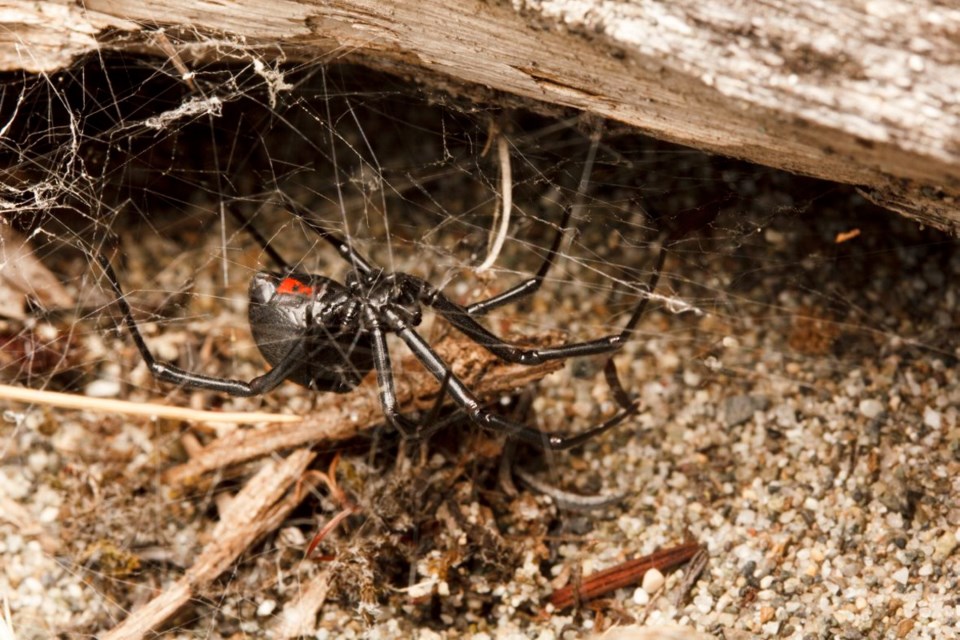Most spiders in Victoria are nothing to fear. But even experienced arachnophiles are cautious about two species, the black widow and the false black widow.
Catherine Scott, a PhD student from the University of Toronto who is in Victoria for field research, said the native black widow, Latrodectus hesperus, is the more dangerous, the only “medically significant spider” in sa���ʴ�ý
Its venom contains a neurotoxin that is painful and can be harmful to the very old or the very young. Symptoms can be flu-like and include cramping. Anybody who is bitten should get medical attention.
But black widows are an outdoor spider that almost never comes into human homes. Unless you are an outdoor hiker and looking for them, you are unlikely to encounter one, Scott said.
They prefer dry, warm habitat. The largest known concentration of the black widow around Victoria is at Island View Beach, and have also been found on Mount Tolmie.
Scott said they build tangled, formless-looking webs, about 20 to 30 centimetres off the ground. They also like to have a nearby retreat under a rock or log.
Despite its venom, the black widow is not an aggressive animal where people are concerned. Faced with something the size of a human, its first impulse is to flee. Even directly confronted and deliberately provoked, it is reluctant to defend itself with a bite.
Scott explained from a spider’s point of view, venom is biologically expensive. It’s made of several complex proteins that are costly for a spider’s body to produce. So in terms of biological economy, expending venom should bring a bug-prey meal in return.
“They are not in the least bit interested in biting humans,” she said. “They don’t even like to bite in defence.”
“They would rather not waste expensive venom biting something that big, even when it’s a potential threat,” said Scott. “They would rather just run away.”
Meanwhile, the bite of the false black widow, Steatoda grossa, is no worse than a wasp sting. Unless the bite prompts an allergic reaction, it’s of no interest to medicine.
The false black widow, a European transplant, does, however, like to live in human houses. And like its near relative, the black widow, it builds a tangled web close to ground level.
But the false black widow is also not interested in biting people. Its first response in meeting a human is to run away.
Scott said when people are bitten, it’s usually because the spider, black or false black widow, is pressed into a space with no retreat.
The spider likely crawled into something such as a shoe or a sweater left on the floor. Suddenly, the creature finds itself crushed by a big object covered in human skin, so it bites.
But Scott, who has been handling spiders for years, including black widows without a bite, is forever suspicious when somebody tells her they suffered a spider bite.
“People really like to think they get bitten by spiders,” she said. “But unless you have evidence, like a crushed spider in your hand, it’s really unlikely.”
“Their reputation is totally undeserved, but spiders still get this very bad rap,” Scott said. “People just love to hate spiders, and they are much more helpful [by killing insect pests] than they are harmful.”



